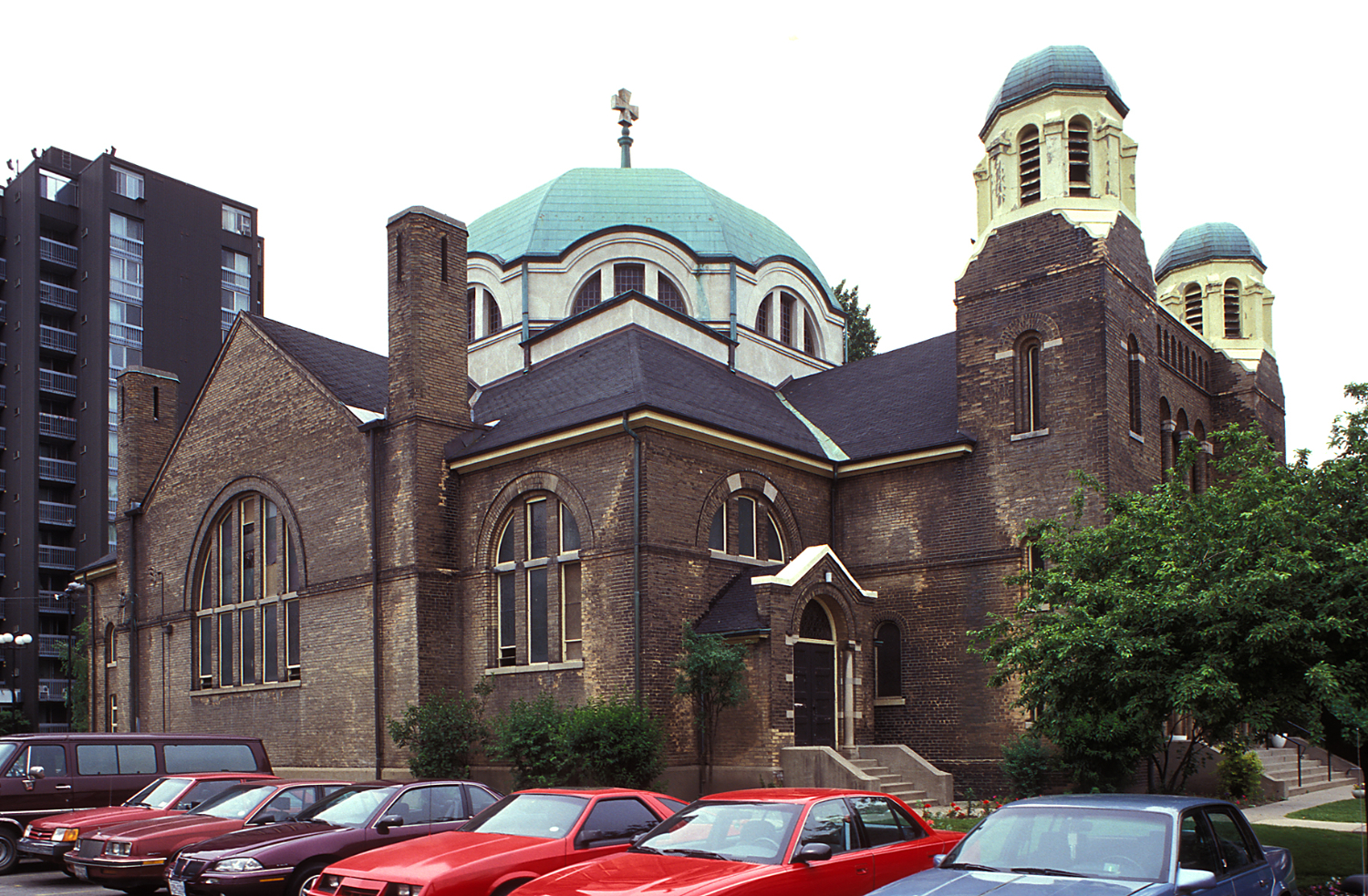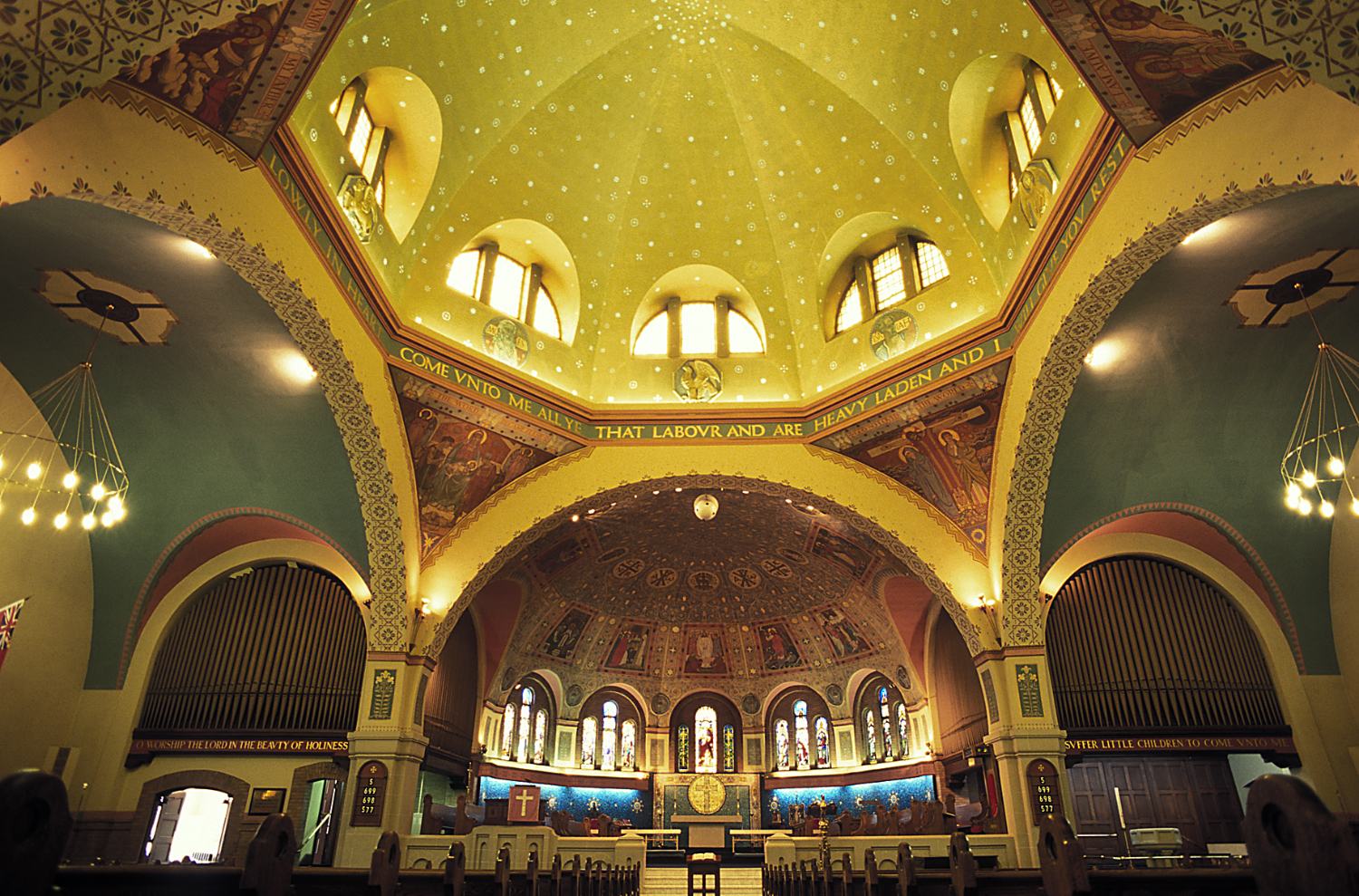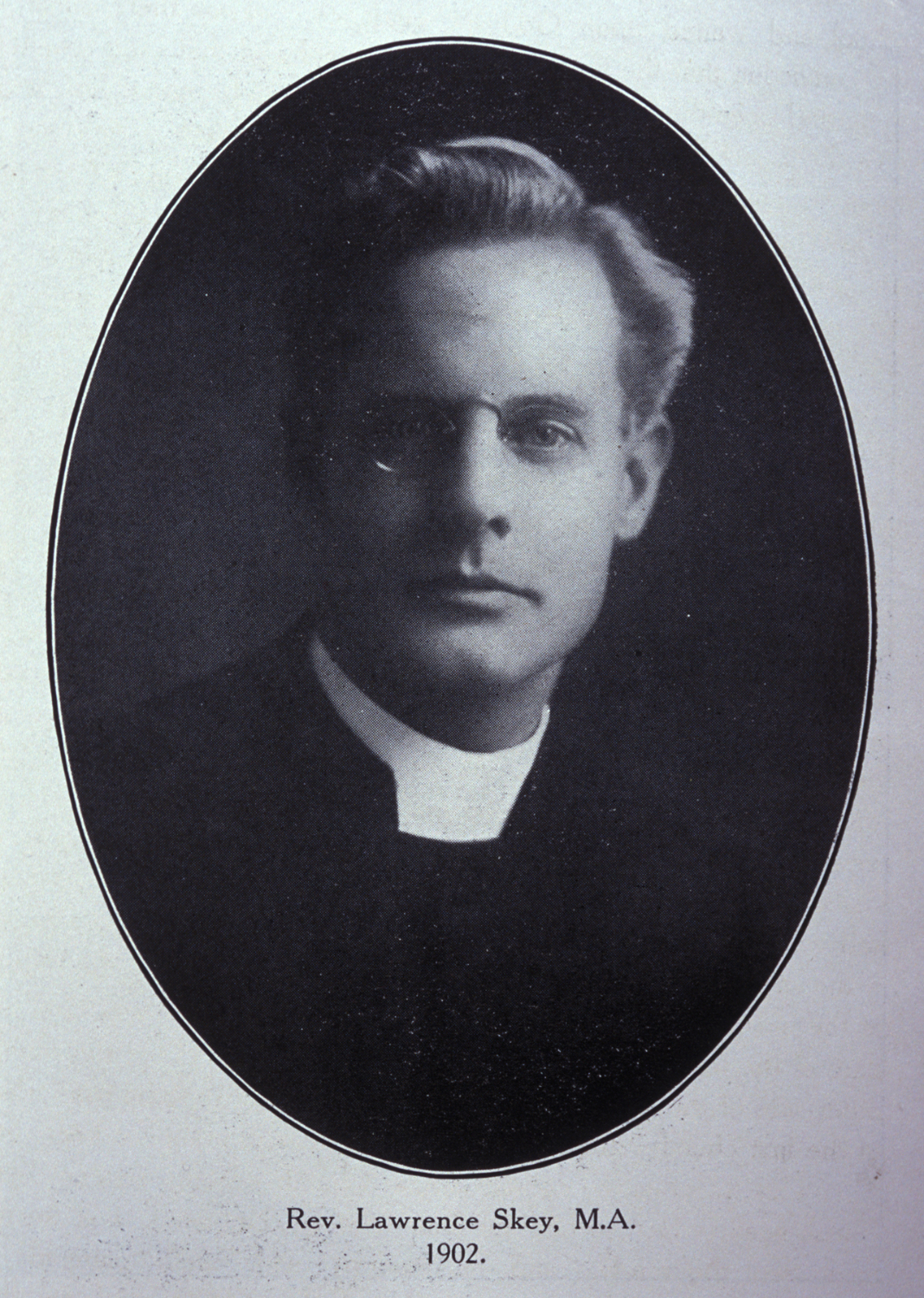
St. Anne’s Church, Toronto, by Ford Howland (1907).
By Peter Coffman
I don’t enjoy writing eulogies, and I don’t think I’ve ever written one for a building (although I did once write what I called a ‘requiem’ for one). But for St. Anne’s Church in Toronto, which was destroyed in a fire yesterday, I have to make an exception.
St. Anne’s was a gloriously renegade building. It was beautiful, yes – exceptionally so. But it was also a rebel. It was Byzantine when Anglican churches were supposed to be Gothic. It was decorated by artists with no experience in liturgical art. It put the ‘Protest’ back into ‘Protestant’. By the time it was fully completed, it was certainly the oddest Anglican church in Toronto, and possibly in the country.

St. Anne’s Church, Interior.
The architect of St. Anne’s was Ford Howland, but I’m pretty sure the mastermind was his client, the Rev. Lawrence Skey. Skey was a man of firm views and swift action. A newspaper article described him in 1917:
Slight of build, but well-knit, fresh of face, hair slightly gray, mind alert and exceptionally well-informed, quick and enthusiastic in speech, strong in his opinions, shrewd, warm-hearted, and wholly devoted to his work – there you have an impressionistic picture of Reverend Lawrence Skey, M.A.

Canon Rev. Lawrence Skey.
Skey was adored by his parishioners. Upon his return from service as a chaplain in WW1, his congregation gave him a hero’s welcome, singing (to the tune of ‘When Johnny Comes Marching Home”):
They say that when he got to France,
They do. Hurrah!
The Kaiser said: “We haven’t a chance,”
He did. Hurrah!
If he is only a chaplain, Gee!
What must the regular soldiers be –
Ach Himmel! Donnervetter! It’s all
off mit me.
When it came time to build a bigger church to house the growing congregation at St. Anne’s, Skey as usual did it his way. Since the middle of the 19th century, the accepted, approved and expected style for Anglican churches had been Gothic. Skey decided that his new church would be – wait for it – Byzantine. Yes, Byzantine, modeled (distantly) on the Hagia Sophia. ‘It’s a mosque!’, cried Toronto. ‘No, it’s a synagogue!’ declared others. Nope, it was just Skey being a contrarian – brandishing his Low-Church credentials, and ridding himself of the trappings and traditions of the whole Anglo-Catholic movement in one blow. It was, as the Toronto Star called it, “Skey’s Byzantine defiance.”
By 1923, Skey had raised enough money to decorate the hitherto bare interior. And that’s when he made his second renegade decision. He could have hired an established, respectable liturgical artist or atelier. Or at least a devout Anglican. Instead, he hired a drinking buddy from the Arts and Letters Club. The friend’s name was James Edward Hervey MacDonald, and as well as being a distinguished member of the A&L Club, he was a founding member of the Group of Seven.

The Crucifixion, St. Anne’s Church, by JEH MacDonald.
MacDonald’s original plan was to do all of the decoration himself, aided by a few of his students at the Ontario College of Art. Unfortunately for him (if not for us), it was summer by the time he was ready to begin and his students had dispersed. So, he did what anyone would do in such circumstances – he called on his friends to bail him out. Including friends named Fred Varley, Frank Carmichael, Frances Loring and Florence Wyle. Thus was an A-list all-star team of Canadian artists assembled to decorate a Byzantine Anglican church in a working-class Toronto neighbourhood.

The Evangelist John, by Frances Loring and Florence Wyle, St. Anne’s Church.

The Nativity, by Frederick Varley, St. Anne’s Church.
St. Anne’s was an utterly unique building; one that combined Skey’s Low-Church ideals, Howland’s quiet sublimity, and the sensibilities of several of Canada’s finest artists filtered through the historical lens of Byzantine art. It could only have come into being in that place, at that time, with those people. There’s already talk about re-building the church – I’ve even come across the suggestion that it be reconstructed as was, “except for the murals”. That, of course, is impossible. Notwithstanding its many creators, it was an inviolable whole. And it is gone.
Peter Coffman
peter.coffman@carleton.ca
@TweetsCoffman
@petercoffman.bsky.social
Parts of this blog are adapted from an article I wrote for the Journal of the Society of Architecture in Canada in 2005. If you are interested in the full version of the original article, it can be downloaded here.